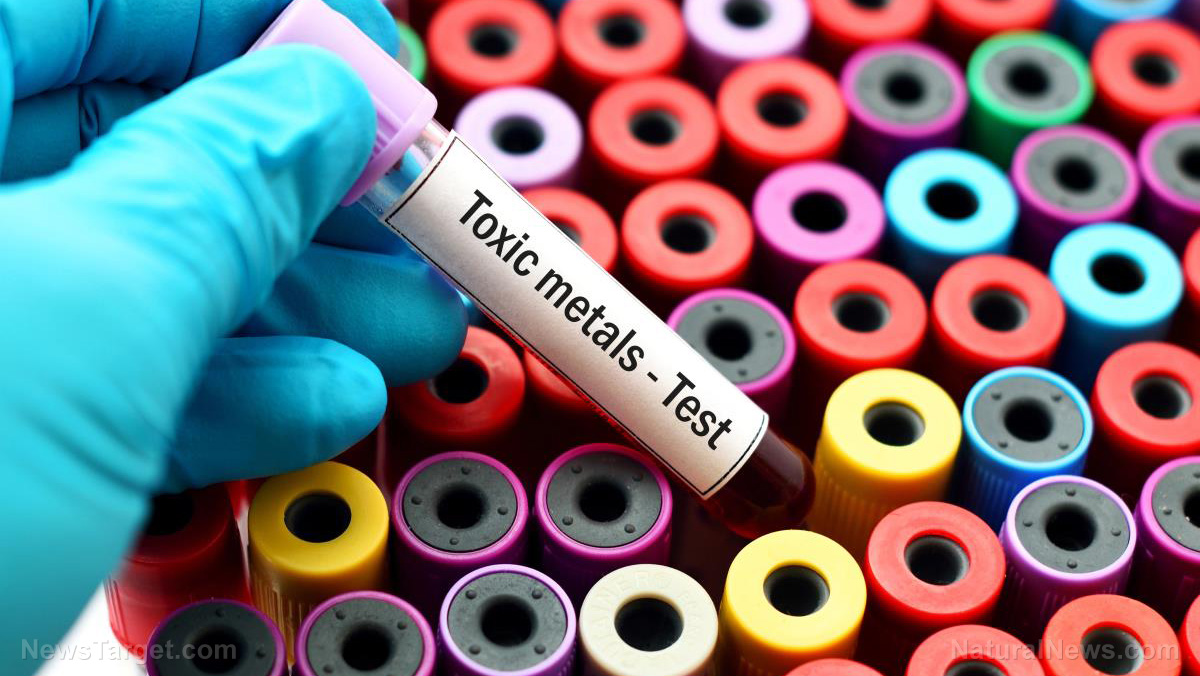Here’s how you can protect yourself against possible lead contamination
12/02/2018 / By RJ Jhonson

Lead is a serious health risk. It’s a silent killer that gradually seeps into your system and threatens your health, survival, and safety from the inside. Considering how common lead is, one of the most important skills any prepper needs to develop is how to identify lead, its symptoms, and how to avoid getting sick because of it.
Lead is a highly toxic metal. Unfortunately, it is also very industry-friendly, which is why it was predominantly used for a wide variety of applications until the 20th century when its hazardous nature came to light. These applications included water pipes, paint, bullets, gasoline, and even cosmetics. It is also used as a shield against radiation.
As a toxin, lead slowly and gradually accumulates in the human body. Often, symptoms are not expressed until after several months or years, when high concentrations have already collected in the person’s system. Lead is a neurotoxin – it attacks the brain – and children, whose brains are still developing, are especially susceptible to it.
Knowing the symptoms of lead poisoning will allow you to act before it’s too late. Lead is so dangerous that its numerous symptoms alone are enough to warrant an entire discussion. But if you suspect contamination with lead, be sure to watch out for the right signs, including cramps, constipation, abdominal pain, headache, aggressive behavior, loss of appetite, high blood pressure, numbness or tingling in the extremities, anemia, memory loss, sleeping problems, and kidney dysfunction.
Further symptoms include vomiting, muscle weakness, and seizures. Some patients even go into a coma. While these symptoms may seem common to other diseases and toxins, there are plenty of blood tests to prove that they are the effect of lead, so proper treatment regimens may be administered as long as the patient is brought promptly to a medical specialist.
The power of the elements: Discover Colloidal Silver Mouthwash with quality, natural ingredients like Sangre de Drago sap, black walnut hulls, menthol crystals and more. Zero artificial sweeteners, colors or alcohol. Learn more at the Health Ranger Store and help support this news site.
How does lead contamination occur?
As previously mentioned, lead poisoning tends to exhibit signs when the patient already has considerable levels of the toxin in their body. For this reason, keeping yourself and your loved ones safe from the effects of lead means understanding how and why contamination occurs in the first place.
One of the most common causes of poisoning is lead paint, which was very commonly used in older residential buildings. The toxin is also found in older toys, as well as those made by unscrupulous manufacturers. It is, therefore, important that you purchase toys, especially those that children tend to put in their mouth, only from trusted sources.
Lead is also found in the ground, especially in areas where the metal was mined or where it was used in buried structures, such as pipes and solder. The lead in the ground and pipes gradually seep into groundwater, as well as drinking water, putting entire communities at risk. In fact, this is the very cause behind the water crisis in Flint, Michigan.
To ensure that your drinking water is safe for consumption, make sure to have it tested for the presence of lead and other harmful contaminants.
Treating cases of lead poisoning
It’s best to immediately visit a medical professional should you suspect lead poisoning. But if you want to protect yourself and your family from this noxious substance, the best thing to do is to not get exposed to it. If you are unsure about the quality of your tap water and have yet to have it tested, you can use lead filtering systems available in the market. These will eliminate – or at least, reduce – the threat of lead in the water you drink every day. (Related: Natural remedies for lead poisoning: Cilantro, also known as coriander, naturally protects the liver and lowers lead concentration.)
Understand the threat of lead better by going to Pollution.news.
Sources include:
Tagged Under: environment, Lead, Lead contamination, lead poisoning, lead poisoning symptoms, lead toxin, Toxic Metals, toxic water, toxins




















